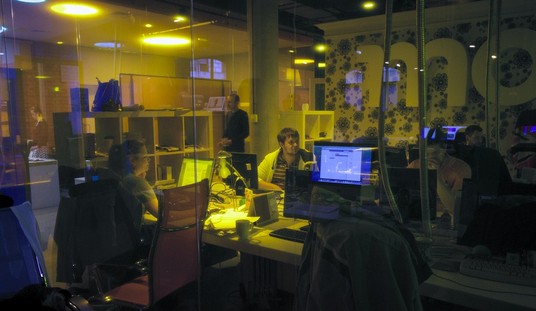The financial crisis exists mostly because of government mistakes, particularly the Federal Reserve’s easy-money policy, the corrupt system of subsidies from Fannie Mae and Freddie Mac, and various “affordable-housing” initiatives that coerced or lured banks into extending loans to people with poor credit.
These policies and others helped to create a bubble, and now the bubble has burst. Not surprisingly, politicians are using the resulting turmoil as an excuse to expand the power of government. The most troubling development is that the Treasury Department is becoming partial owners of banks — in some cases by forcing banks to “sell” shares to the government.
The politicians say these steps are necessary to help the market. This is a rather breathtaking claim since the Dow Jones Industrial Average was well above 11,000 in September, when Treasury Secretary Hank Paulson announced that the economy was in trouble and that the government needed to intervene. Based on the stock market’s response, it appears that investors wisely understand that the phrase, “I’m from the government and I’m here to help you,” is a sign of big trouble.
The Administration’s bumbling also has contributed to uncertainty. Markets have been whipsawed as policy makers lurch in one direction and then another. The Administration first argued that taxpayers should purchase so-called toxic assets from banks, but that plan has fallen out of favor and the Treasury Department is instead giving money to banks (or forcing them to accept money) in exchange for partial ownership. This is a rather dramatic change of direction, but the bailout legislation that passed Congress gave the executive branch a blank check, so there are no constraints on switching tactics.
So what does partial nationalization of banks mean? The good news is that this plan is more likely to achieve the stated goal of improving the financial position of banks. This is hardly a surprise. If the government seized hundreds of billions of dollars from taxpayers and gave that money to grocery stores or furniture companies, they also would have healthier balance sheets.
The more important issue is whether it is a good idea for the government to own private companies. The answer is no. The bailout is a bad idea in general and the semi-nationalization of the banking sector in particular is a dangerous idea. There are at least three significant red flags:
- Political interference: One of the great advantages of free markets is that resources are allocated based on what creates wealth rather than on the basis of what buys votes. This is why America, for instance, is so much more prosperous than France. The bailout/semi-nationalization puts the financial sector at risk of manipulation by the political class. The Treasury Department is structuring the bailout to minimize this risk, but Congress almost surely will want to expand government control of the industry next year, and the possibility of being able to steer loans and investments will be a great temptation. Indeed, Senator Schumer of New York already is agitating for influence over how capital is allocated.
- Influence peddling: Every time politicians gain more power, the relative power and wealth of the lobbying community increases. This, in turn, increases the extent to which resources are misallocated as various groups (taxpayers, businesses, unions, etc) devote time and energy to influencing government rather than focusing on more productive endeavors. The expansion of government power — especially the government ownership of banks — will attract lobbyists in the same way that picnics attract ants. Some lobbying firm already are advertising their ability to help clients get their hands on taxpayer money.
- Rewarding incompetence: One of the most perverse aspects of partial nationalization is that institutions with careless shareholders and incompetent executives are being given a new lease on life. One of the many advantages of a free market is that people earn profits if they make wise decisions, but they suffer losses if they make poor ones. Government intervention is preventing market discipline from working. This is bad in the short run and may be even more damaging in the long run by creating moral hazard, which occurs when people have a perverse incentive to engage in imprudent behavior.
To avoid the aforementioned risks, Congress should have said no to any kind of bailout. And if they thought some action was necessary, policy makers should have looked at other alternatives. While there is no silver-bullet solution that unwinds the damage of a bubble, a preferable option would have been to close down the insolvent institutions and use taxpayer money to merge those companies with banks that behaved responsibly. For example, the government could give a healthy company, say, $1 billion to absorb a bankrupt firm that is $1 billion in the hole. This is largely what happened during the Savings & Loan bailout and it is what happened earlier this year with Washington Mutual and Wachovia.
The benefit of this approach — at least compared to the semi-nationalization scheme — is that politicians do not become owners of banks or other financial institutions, and careless shareholders and executives learn a much-needed lesson about imprudent risk. Unfortunately, but not surprisingly, the Washington establishment is going with an approach that increases the power of the Washington establishment.









Join the conversation as a VIP Member